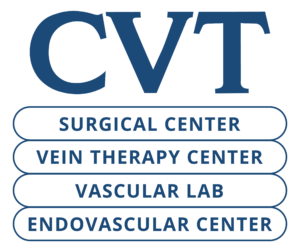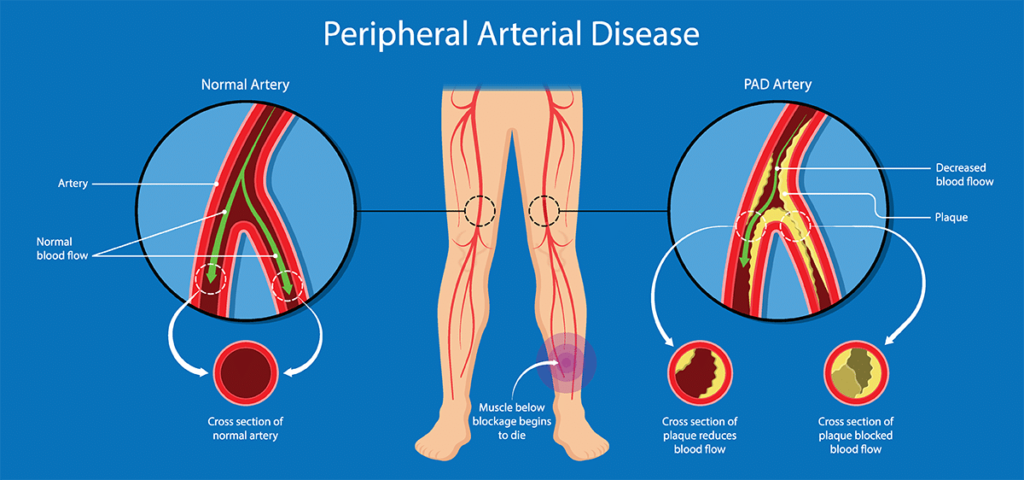PAD is stenosis or occlusion in the arteries outside the heart from atherosclerosis (calcific plaque formation in the walls).
This diagnosis typically refers to the lower extremity arteries. The two most common causes of PAD are tobacco use and diabetes. Symptoms of lower extremity PAD include lower leg pain and/or weakness with walking (also known as claudication), non-healing wounds to the feet, or pain in the feet at night that feels better if the patient lowers them off the side of the bed in a dependent position (also known as rest pain). The treatment for these conditions is antiplatelet and statin therapy initially as well as tobacco cessation and tight glucose control.
If symptoms of claudication begin to impair the patient’s quality of life, or the patient has a non-healing wound or rest pain, the provider will likely proceed with further imaging including an angiogram. An angiogram is an outpatient procedure that is done under light sedation which includes a needle stick to the femoral artery to take pictures and possibly improve blood flow to the affected leg. If the surgeon is unable to improve the blood flow, he may discuss other options including traditional bypass surgery.

